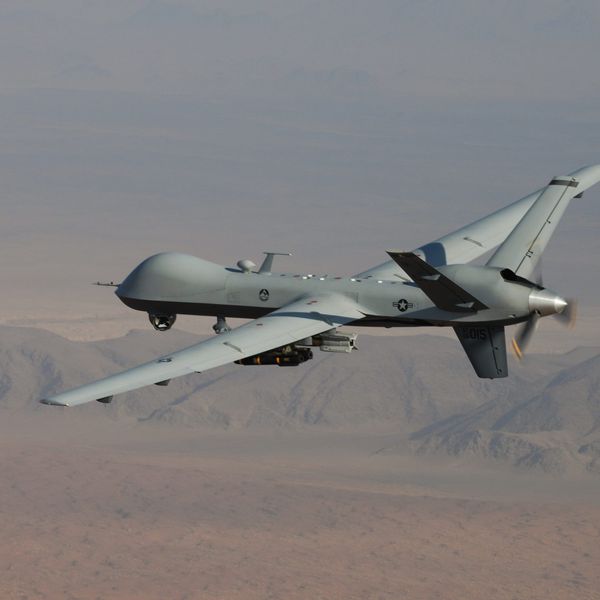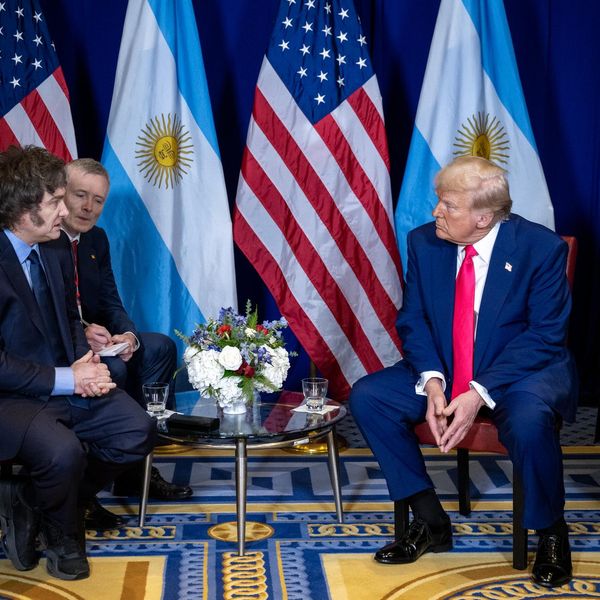Over the coming decades, the U.S. Navy will gradually replace its Nimitz Class supercarriers with a new generation of 10 Gerald Ford Class ships. Each new ship will cost $13 billion to build, meaning that the United States will spend roughly $130 billion to acquire a fleet of ships.
Carrier boosters in the government, academia, and media will argue that 10 ships are not enough as the United States faces the specter of a renewed conventional conflict with China and Russia. Russia lacks carrier capability after its single vessel was badly damaged in an accident, but China is building its first generation of homegrown carriers. The Liaoning recently made headlines while navigating past U.S. Pacific installations.
Yet even the most strident carrier hawk will admit the primary threat to American carriers in some future conventional conflict is not other carriers, but anti-ship ballistic missiles or attack submarines. The threat of both of these systems means that in a conventional conflict carriers would be at extremely high risk. Even though each one operates as part of a larger task force meant to ward off potential threats, no defense is impregnable and if a carrier is hit or sunk they are essentially irreplaceable.
Nuclear carriers are massively expensive to operate and incredibly complex machines. The Navy argues it needs 10 ships minimum because half are being maintained at any one time thus unavailable for service. Normal maintenance on a nuclear carrier takes 3 to 6 months. More complex overhauls can put carriers out of service for longer, sometimes years longer. A single hit from a cruise missile or torpedo though unlikely to sink the ship would ensure the carrier would be out of action for an extended period perhaps even years. This would render it useless as a military asset.
The question then becomes, what is the utility of a carrier in a future peer to peer conflict? The military is asking this question as well. A 2019 war game at the Marine Corps War College illustrated that carriers, though useful against a weaker adversary like North Korea, had to be withdrawn from the combat area once a more capable adversary entered the fray.
Carriers are of course still useful tools for the military serving as an effective force multiplier, but it is likely the same function can be potentially filled by land-based aircraft — though that presents its own challenges — or smaller less expensive ships. The $156 billion the United States spends to acquire its new fleet of ships is after all just the initial investment. Nimitz class carriers cost $6.7 million to operate per day. No data has appeared on the Ford-class, but it is likely it will be of similar cost.
President Eisenhower noted quite correctly in 1953 that “Every gun that is made, every warship launched, every rocket fired signifies, in the final sense, a theft from those who hunger and are not fed, those who are cold and are not clothed.” The United States faces a number of pressing domestic issues, and increasingly new technologies are becoming available that will make carriers less suitable for the role they were intended, not more. That is not to say we should do away with them entirely, but perhaps their numbers should be curtailed and their niche filled by smaller, less expensive ships. That said, the U.S. anxiety over China and its carrier expansion is a useful foil to justify the continued investment in these nuclear leviathans. As China expands its own carrier fleet, these anxieties will only grow.
This is not a unique situation. In the last century, the British Empire and Imperial Germany entered into a naval arms race with each trying to outpace the other in the number of heavy battleships, called Dreadnaughts, that they possessed. Both sides were sure these huge expensive and complex warships would be decisive in a future conflict. They were not.
With the exception of a single indecisive clash at Jutland for the majority of the First World War, the Dreadnaughts remained tied up in port. In naval parlance, this is referred to as a Fleet in Being. Essentially it is a fleet that by its very existence acts as a deterrent, but does not actually undertake operations. The main weapon in naval warfare between Britain and Germany it turned out was the submarine and the destroyer. Smaller cheaper units that could be quickly replaced, but capable of causing significant damage and serving as useful strategic assets. Ultimately the High Seas Fleet the Germans had spent a massive amount of resources on was scuttled in Scapa Flow.
The United States must be cautious to not fall into the same trap in failing to adjust operational concepts and procedures to newly emerging threats. However, there is one immediate advantage the United States could gain from cutting the number of carriers it has. It could approach China for an agreement to limit the number of carrier class vessels each side possesses and even define what specifies a carrier. Such naval arms control treaties were previously instituted in the inter-war period and served as a framework for future arms limitations. Conventional arms control fell by the wayside as the Americans and Soviets were too unevenly matched in naval capability for such a treaty to be of any utility.
In this case, however, such an agreement would serve both U.S. and Chinese interests. If the United States was to offer to limit the number of carriers it maintains, it could ask China to limit itself to an equal number either globally or in the Pacific. There would of course need to be room to allow China to replace its current conventional carriers with nuclear ships at a later date, but that would be acceptable so long as the total number remains the same.
Agreeing to limitations on carriers heads off a potentially costly carrier building race in the future and allows both parties to reduce their financial cost. By agreeing to allow China to have a certain number of ships equal to its own, the United States could soothe China's ego by tacitly acknowledging it as an equal. China in turn could have the opportunity to show it is a responsible international stakeholder by limiting its military expansion. Such an agreement could also be a gateway to much needed deeper engagement between the two nations both bilaterally and multilaterally.
The United States between 1946-1991 built up a system of arms control treaties and standards of behavior that prevented the world from plunging once more into war. Building a similar system to de-escalate tensions in the Pacific and ensure the region does not become an armed camp should be central to U.S. foreign policy. China may well refuse any such engagement, but that also is to the U.S. advantage as it reinforces the argument to the international community that China is pursuing militarism while the United States is working for sustainable coexistence. It is in the U.S. interest to invest its resources at home or in cost-effective weapons, not the leviathans of yesterday's wars. If limiting that advantage can serve a diplomatic victory so much the better.
















